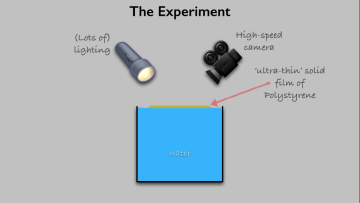2D problems in groups
Abstract
The Algebraic Torus Theorem
Abstract
I will discuss a wonderful structure theorem for finitely generated group containing a codimension one polycyclic-by-finite subgroup, due to Martin Dunwoody and Eric Swenson. I will explain how the theorem is motivated by the torus theorem for 3-manifolds, and examine some of the consequences of this theorem.
Tropical Coordinates on the Space of Persistence Barcodes
Abstract
The aim of applied topology is to use and develop topological methods for applied mathematics, science and engineering. One of the main tools is persistent homology, an adaptation of classical homology, which assigns a barcode, i.e., a collection of intervals, to a finite metric space. Because of the nature of the invariant, barcodes are not well adapted for use by practitioners in machine learning tasks. We can circumvent this problem by assigning numerical quantities to barcodes, and these outputs can then be used as input to standard algorithms. I will explain how we can use tropical-like functions to coordinatize the space of persistence barcodes. These coordinates are stable with respect to the bottleneck and Wasserstein distances. I will also show how they can be used in practice.
The Matroid of Barcodes: Combinatorial Foundations in TDA
Abstract
Topological data analysis (TDA) is a robust field of mathematical data science specializing in complex, noisy, and high-dimensional data. While the elements of modern TDA have existed since the mid-1980’s, applications over the past decade have seen a dramatic increase in systems analysis, engineering, medicine, and the sciences. Two of the primary challenges in this field regard modeling and computation: what do topological features mean, and are they computable? While these questions remain open for some of the simplest structures considered in TDA — homological persistence modules and their indecomposable submodules — in the past two decades researchers have made great progress in algorithms, modeling, and mathematical foundations through diverse connections with other fields of mathematics. This talk will give a first perspective on the idea of matroid theory as a framework for unifying and relating some of these seemingly disparate connections (e.g. with quiver theory, classification, and algebraic stability), and some questions that the fields of matroid theory and TDA may mutually pose to one another. No expertise in homological persistence or general matroid theory will be assumed, though prior exposure to the definition of a matroid and/or persistence module may be helpful.
16:00
Joint NT/LO seminar: Counting lattice points and O-minimal structures
Abstract
Let L be a lattice in R^n and let Z in R^(m+n) a parameterized family of subsets Z_T of R^n. Starting from an old result of Davenport and using O-minimal structures, together with Martin Widmer, we proved for fairly general families Z an estimate for the number of points of L in Z_T, which is essentially best possible.
After introducing the problem and stating the result, we will present applications to counting algebraic integers of bounded height and to Manin’s Conjecture.
T-duality from ambitwistor strings
Abstract
We study the winding mode sector of recently discovered string theories, which were, until now, believed to describe only conventional field theories in target space. We discover that upon compactification winding modes allows the string to acquire an oscillator spectrum giving rise to an infinite tower of massive higher-spin modes. We study the spectra, S-matrices, T-duality and high-energy behaviour of the bosonic and supersymmetric models. In the tensionless limit, we obtain formulae for amplitudes based on the scattering equations. The windings decouple from the scattering equations but remain in the integrands. The existence of this winding sector shows that these new theories do have stringy aspects and describe non-conventional field theories. This talk is based on https://arxiv.org/abs/1710.01241.
Amyloid hydrogels: Pathogenic structures with similarity to cellular gel phases
Abstract
A wide range of chronic degenerative diseases of mankind result from the accumulation of altered forms of self proteins, resulting in cell toxicity, tissue destruction and chronic inflammatory processes in which the body’s immune system contributes to further cell death and loss of function. A hallmark of these conditions, which include major disease burdens such as Alzheimer’s Disease and type II diabetes, is the formation of long fibrillar polymers that are deposited in expanding tangled masses called plaques. Recently, similarities between these pathological accumulations and physiological mechanisms for organising intracellular space have been recognised, and formal demonstrations that amyloid accumulations form hydrogels have confirmed this link. We are interested in the pathological consequences of amyloid hydrogel formation and in order to study these processes we combine modelling of the assembly process with biophysical measurement of gelation and its cellular consequences.
Please see https://www.eventbrite.co.uk/e/qbiox-colloquium-dunn-school-seminar-hil…
for further details
Modelling T cell antigen receptor signalling
Abstract
T cells stimulation by antigen (peptide-MHC, pMHC) initiates adaptive immunity, a major factor contributing to vertebrate fitness. The T cell antigen receptor (TCR) present on the surface of T cells is the critical sensor for the recognition of and response to “foreign" entities, including microbial pathogens and transformed cells. Much is known about the complex molecular machine physically connected to the TCR to initiate, propagate and regulate signals required for cellular activation. However, we largely ignore the physical distribution, dynamics and reaction energetics of this machine before and after TCR binding to pMHC. I will illustrate a few basic notions of TCR signalling and potent quantitative in-cell approaches used to interpret TCR signalling behaviour. I will provide two examples where mathematical formalisation will be welcome to better understand the TCR signalling process.
Please see https://www.eventbrite.co.uk/e/qbiox-colloquium-dunn-school-seminar-hil… for further details.


